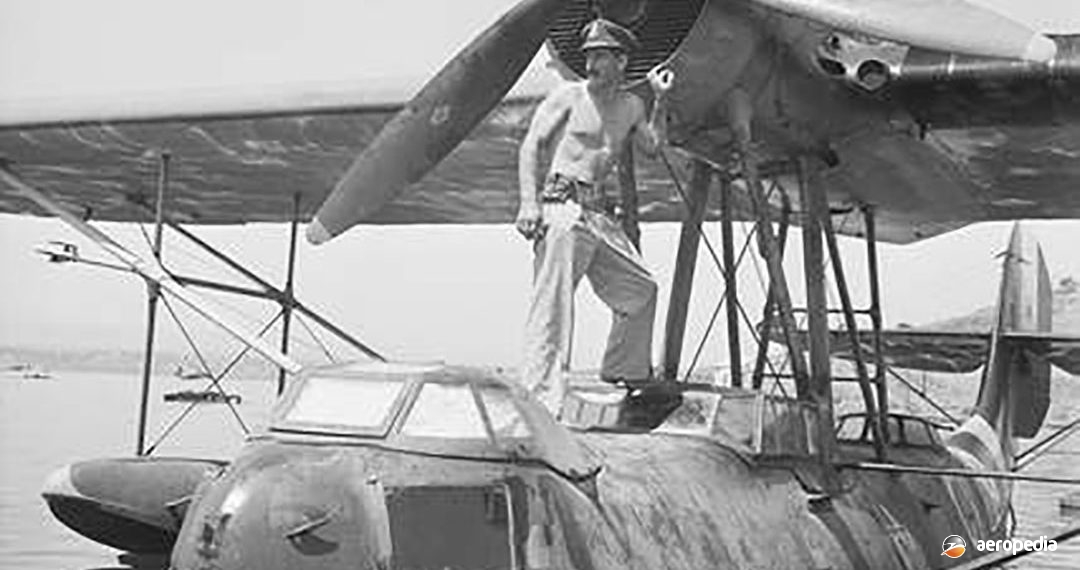Photograph:
Cant Z.501 Gabbiano with No 3 Squadron, RAAF in Sicily in 1943 (Australian War Memorial)
Country of origin:
Italy
Description:
Single-engine military reconnaissance flying-boat
Power Plant:
One 671 kw (900 hp) Isotta Fraschini Asso XI twelve-cylinder VEE liquid-cooled supercharged engine
Specifications:
- Wingspan: 22.5 m (73 ft 10 in)
- Length: 14.3 m (46 ft 11 in)
- Height: 4.42 m (14 ft 6 in)
- Wing area: 62 m² (667.38 sq ft)
- Max speed at 2,500 m (8,200ft): 275 km/h (171 mph)
- Cruising speed at 2,000 m (6,560 ft): 240 km/h (149 mph)
- Range with full payload: 1,000 km (621 miles)
- Max range: 2,400 km (1,491 miles)
- Empty weight: 3,840 kg (8,466 lb)
- Loaded weight: 7,035 kg (15,510 lb)
Armament:
Three 7.69 mm (0.303 in) machine guns on flexible mounts; up to 640 kg (1,411 lb) of bombs
History:
In 1931 the Italian Company Cantiere Novale Triestino (CANT) was reorganised as Cantieri dell’ Adriadtico (CRDA) and Filippo Zappato returned from working in France to become Chief Engineer. The first of his designs was the CANT Z.501 Gabbiano [Seagull], which was built to meet a requirement for a long-range reconnaissance flying boat with the ability to carry bombs. Construction was of wood, with fabric covering the upper hull, wing and tail surfaces.
The engine was an Isotta Fraschini supercharged liquid-cooled radial in a nacelle on top of the wing. This nacelle included a station for the flight engineer. Armament was a machine-gun for the flight engineer in the nacelle and machine guns in the bow and dorsal positions. Bombs were able to be carried on racks attached to the wing struts. On later aircraft the machine-gun in the bow was removed, the observer’s cockpit was fully enclosed and bomb shackles were fitted at the intersection of the wing and front struts. These were capable of carrying four 160 kg (353 lb) bombs or two 250 kg (551 lb) bombs.
The prototype first flew on 7 February 1934 and soon the type was proved by the Chief Pilot of the manufacturer, who flew the aircraft 4,120 km (2,560 miles) from Monfalcone, Trieste to Massawa in Eritrea in July 1935. After the record was lost to a French aircraft, a new record was set by the Cant Z.501 with a flight to Berbera in British Somaliland, a distance of 4,957 km (3,080 miles). The aircraft used for these flights was a much modified aircraft civil registered as I-AGIL.
The Cant Z.501 entered service in 1937 and by the time Italy entered the conflict of World War II a total of 200 examples had been delivered. They served with 17 Squadrons and 4 Flights. First operations were in support of the Nationalists in the Spanish Civil War. A total of 454 examples was completed, a few being supplied at one stage to Romania.
During World War II, whilst Australian, British and South African units were in North Africa fighting Rommel’s Africa Corps and the Italian Army, crews when they over-ran airfields and bases used by Axis forces captured and returned to airworthiness enemy aircraft to use as squadron hacks. No 3 Squadron RAAF located a Cant Z.501 Gabbiano flying boat in Libya and flew it for a short time as a squadron hack before it was grounded due to lack of spares. Subsequently it was abandoned.

